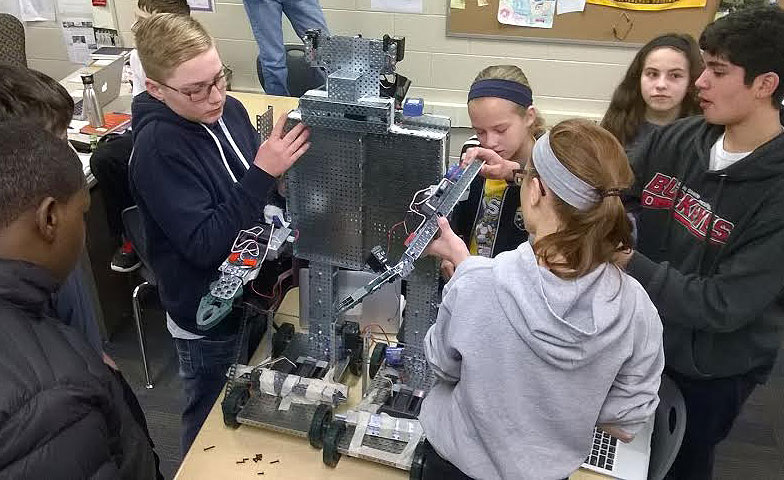Strategies for developing collaboration skills
As a robotics teacher at Pickerington Ridgeview STEM Junior High, one of the major skills I focus on building in my students is collaboration. Being able to work well with others to accomplish a shared goal is not just an academic skill, but rather a life skill. Life skills are the base that academic skills are built on.
In their groups, students are given a real-life problem to solve by building and programming a solution. These problem-based challenges are purposefully open-ended with numerous ways they can be solved. Below are strategies that have proved to be successful with this type of group work learning environment:
1. Groups of 2-3 students
Two students per group is best, three works well, and four students is too many. With four in a group, there is more of an opportunity for students to be off task and not focused on the challenge.
2. Purposefully selected groups
Below are types of groups I incorporate:
- Homogenous Groups — Higher level learners with other higher level learners, medium level learners with other medium level learners, and lower level learners with other lower level learners
- Heterogeneous Mixed Groups — A high level learner with a medium or lower level learner
- Completely Random — Have a random computer generator select the group members
- Student Choice — Students get to choose their group members
3. Groups working at their own speed
As students solve one challenge, they then move to the next challenge, whether other groups are done or not. For some groups, this allows more time to solve the problem at hand. For others it allows them to move to the next problem without having to wait on others.
4. Whole-class challenge
To further build collaboration, the next level of group work evolves from groups of students working independent of each other to all groups working together for a united cause. A challenge is proposed to the whole class and each group of students is responsible for a different part of the solution. These different components are then combined to solve the proposed problem.
For example, one challenge I propose to students is to build a life-size moving robot. The class is divided into seven groups. Six of the groups are tasked with building and programming the different body parts (head, chest, right/left legs, right/left arms). One group of all higher-level learners is designated as the “Troubleshooters Group.” This group is in charge of combining the different body parts together and communicating with the different groups to make sure the parts fit together; for instance, the head isn’t too big for the chest, the right leg is not longer than the left leg. The Troubleshooters Group also helps the other groups with any issues that arise.
A similar project is the Amusement Park Challenge, in which groups of students design, build, and program different amusement park rides and then combine them together to create a class Amusement Park. Most of the challenges in my Robotics 2 class are designed this way.
Taking it to the Next Level
Looking ahead, the next level of building collaboration will be putting students in charge of determining the different roles for each group instead of me pre-determining them. In this case, the students will figure out how to split up the project into different components. Then once the roles have been determined, each group will be given a job to complete. Once completed, the different components will be combined together to solve the problem that was presented to the students.
For example, I would tell the students that they have one week to build a life-size robot that can move forward and backward, opens and closes its hands, and shows two different facial expressions. And with this, the students will figure out how to divide the task so each group is in charge of a different element of the robot.
The final level of building collaboration is for students to articulate their own problems and challenges that the whole class will solve in a similar fashion by breaking the challenge into tasks, then combining the different components to solve the problem at hand. In this case, students are engaging in service learning; they’re identifying problems in their communities and designing and creating a solution.
These strategies are not just applicable in a Robotics classroom, they’re applicable in all subject areas. Incorporating a focus on collaborative problem-solving in the classroom is a life lesson that will help students no matter where they go.



